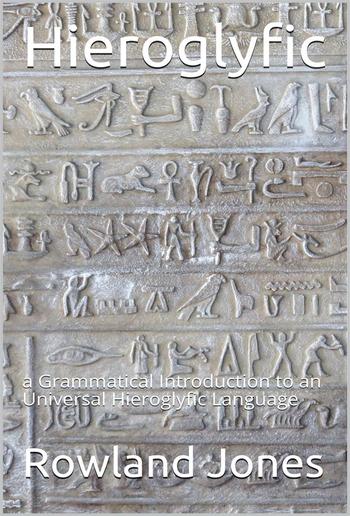
Rowland Jones - Hieroglyfic / or, a Grammatical Introduction to an Universal Hieroglyfic Language
Hieroglyfic / or, a Grammatical Introduction to an Universal Hieroglyfic Language
Rowland Jones
Description
A Grammatical Introduction
TO
An Universal Hieroglyfic Language;
CONSISTING OF
English SIGNS and VOICES.
WITH
A Definition of all the Parts of the English, Welsh, Greek, and Latin Languages;
Some Physical, Metaphysical, and Moral cursory Remarks on the Nature, Properties, and Rights of Men and Things.
And Rules and Specimens for composing an Hieroglyfic Vocabulary of the Signs or Figures, as well as the Sounds of Things, upon rational and philosophical Principles, and the primitive Meaning of Names.
A hieroglyph (Greek for "sacred writing") was a character of the ancient Egyptian writing system. Logographic scripts that are pictographic in form in a way reminiscent of ancient Egyptian are also sometimes called "hieroglyphs". In Neoplatonism, especially during the Renaissance, a "hieroglyph" was an artistic representation of an esoteric idea, which Neoplatonists believed actual Egyptian hieroglyphs to be. The word hieroglyphics refer to a hieroglyphic script.
The Egyptians invented the pictorial script. The appearance of these distinctive figures in 3000 BCE marked the beginning of Egyptian civilization. Though based on images, Egyptian script was more than a sophisticated form of picture-writing. Each picture/glyph served three functions: (1) to represent the image of a thing or action, (2) to stand for the sound of a syllable, and (3) to clarify the precise meaning of adjoining glyphs. Writing hieroglyphs required some artistic skill, limiting the number chosen to learn it. Only those privileged with an extensive education (i.e. the Pharaoh, nobility and priests) were able to read and write hieroglyphs; others used simpler 'joined-up' versions: demotic and hieratic script.

